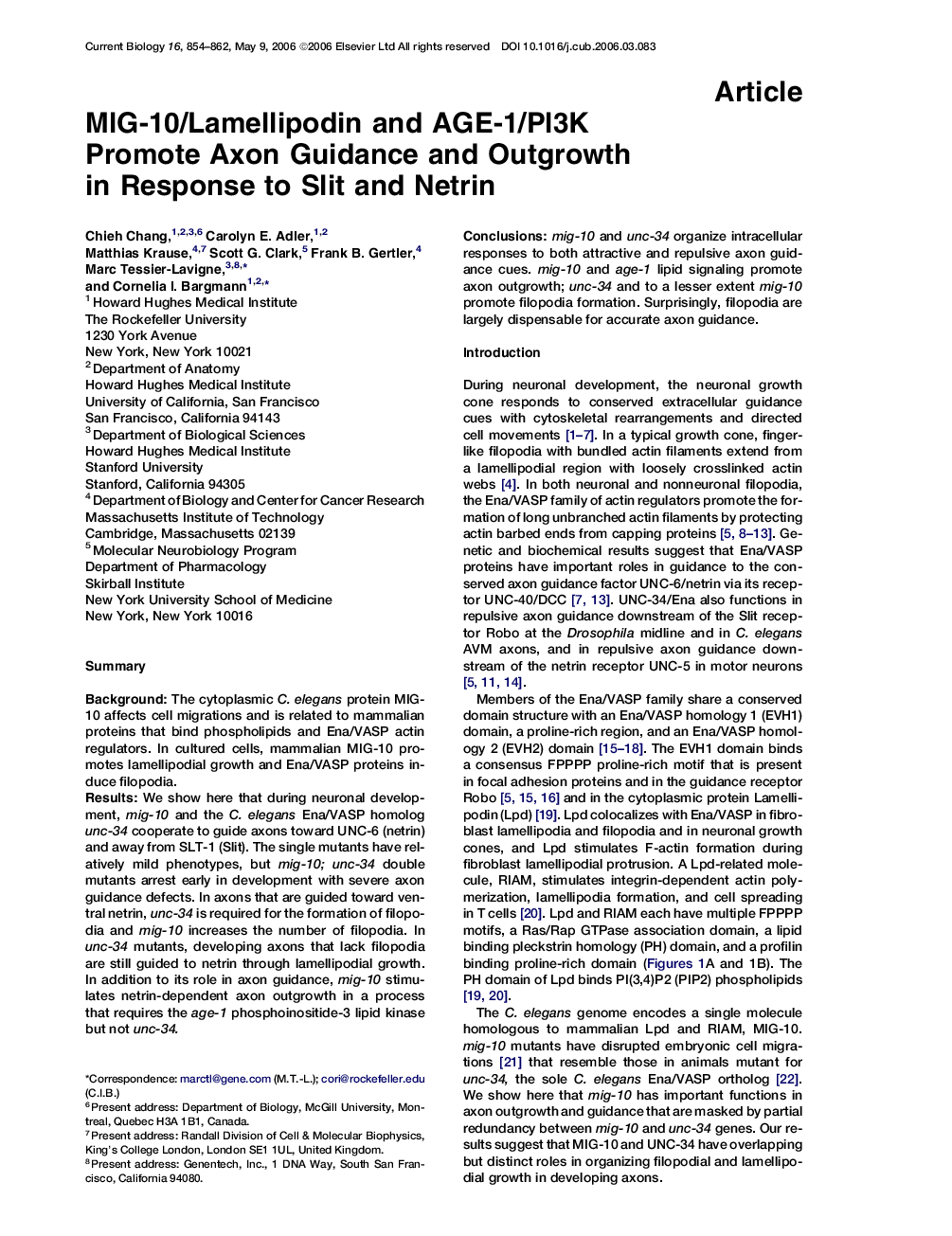| Article ID | Journal | Published Year | Pages | File Type |
|---|---|---|---|---|
| 2045649 | Current Biology | 2006 | 9 Pages |
SummaryBackgroundThe cytoplasmic C. elegans protein MIG-10 affects cell migrations and is related to mammalian proteins that bind phospholipids and Ena/VASP actin regulators. In cultured cells, mammalian MIG-10 promotes lamellipodial growth and Ena/VASP proteins induce filopodia.ResultsWe show here that during neuronal development, mig-10 and the C. elegans Ena/VASP homolog unc-34 cooperate to guide axons toward UNC-6 (netrin) and away from SLT-1 (Slit). The single mutants have relatively mild phenotypes, but mig-10; unc-34 double mutants arrest early in development with severe axon guidance defects. In axons that are guided toward ventral netrin, unc-34 is required for the formation of filopodia and mig-10 increases the number of filopodia. In unc-34 mutants, developing axons that lack filopodia are still guided to netrin through lamellipodial growth. In addition to its role in axon guidance, mig-10 stimulates netrin-dependent axon outgrowth in a process that requires the age-1 phosphoinositide-3 lipid kinase but not unc-34.Conclusionsmig-10 and unc-34 organize intracellular responses to both attractive and repulsive axon guidance cues. mig-10 and age-1 lipid signaling promote axon outgrowth; unc-34 and to a lesser extent mig-10 promote filopodia formation. Surprisingly, filopodia are largely dispensable for accurate axon guidance.
